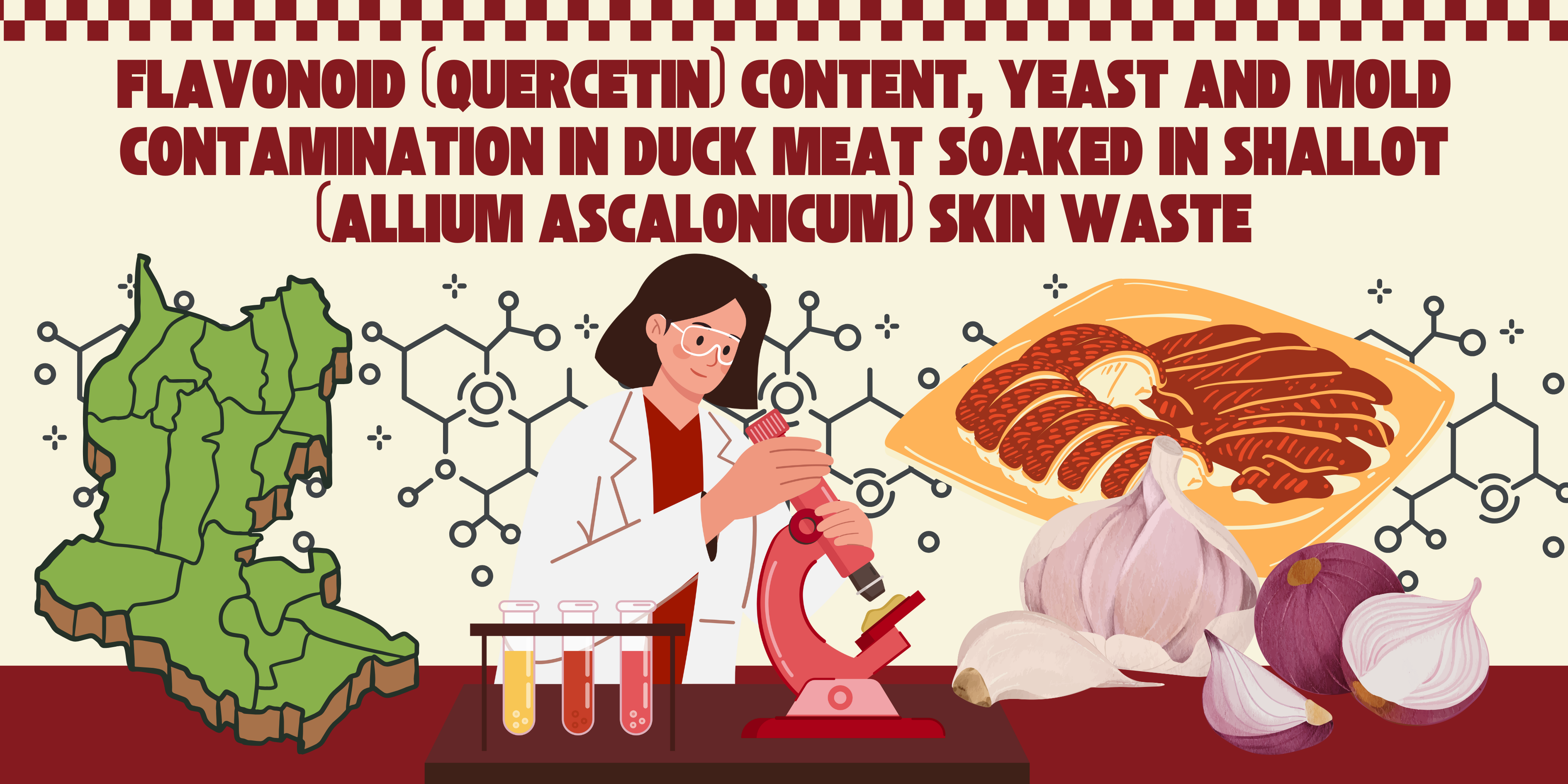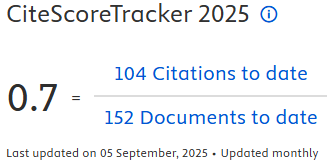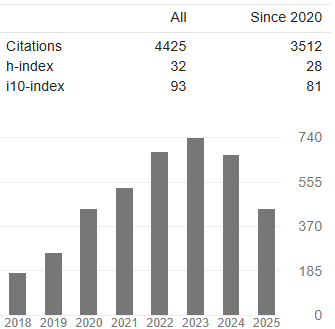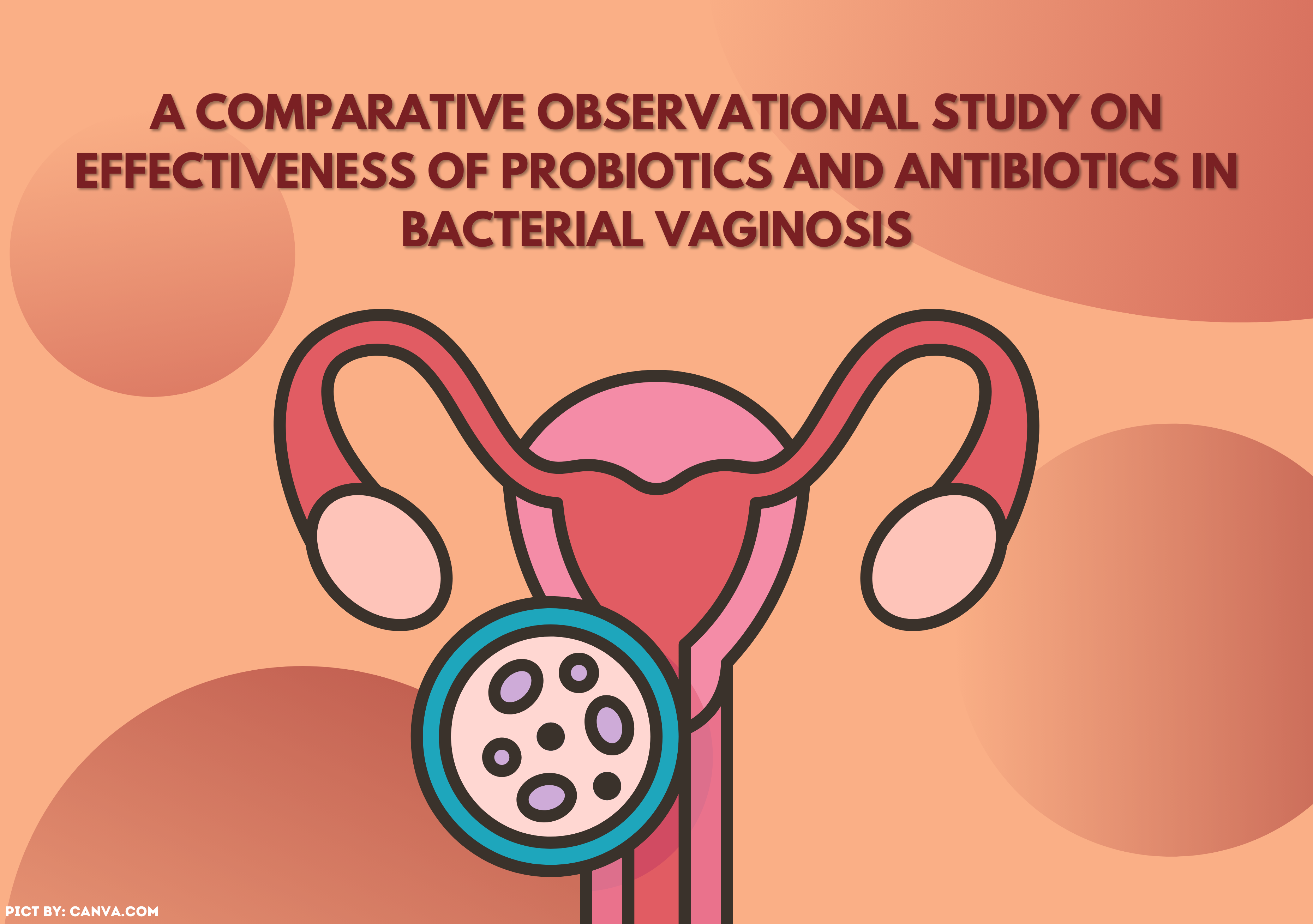FLAVONOID (QUERCETIN) CONTENT, YEAST AND MOLD CONTAMINATION IN DUCK MEAT SOAKED IN SHALLOT (ALLIUM ASCALONICUM) SKIN WASTE

Downloads
Introduction: The flavonoid content in shallot skin is 2–10 g/kg higher than that in the edible portion, with < 0.03 to 1 g/kg. Aims: To determine flavonoid (quercetin) content and yeast and mold contamination in duck meat soaked in shallot (Allium ascalonicum) skin waste. Methods: The sample was shallot skin waste from 14 districts in Brebes Regency, Indonesia. Analysis was performed in several steps, including the production of shallot skin flour and measurement of flavonoid (quercetin) levels using a UV-Vis spectrophotometer. This study analyzed the amount of yeast mold growth on duck meat after soaking in shallot skin waste extract and the test data obtained will be analyzed descriptively and presented in the form of a table. Results: The average flavonoid (quercetin) content in the shallot skin waste was 4.33% w/w. The lowest flavonoid (quercetin) content in the Sirampog district was 4.29% w/w and the highest quercetin content was 4.40% w/w in the Wanasari district. The mold and yeast contamination levels varied among treatments, with treatment 1 having the highest contamination rate of 96 colonies/g, followed by treatments 2 and 3 with contamination rates of 20 and 15 colonies/g, respectively, and treatment 4 having contamination rates of 3 colonies per gram. Conclusion: The flavonoid content of shallot skin waste varied across the districts. Mold and yeast contamination levels were significantly different among the treatments, with treatment 1 showing the highest contamination rate. Treatment 4 resulted in a very rapid reduction in the number of molds and yeast (3 colonies).
[AOAC] Association of Official Analytical Chemist, 2016. AOAC Official Method 935.29 Loss on Drying (Moisture) in Malt Gravimetric Method. Washington DC (US).
Aqilah, N.M.N., Rovina, K., Felicia, W.X.L. and Vonnie, J.M., 2023. A Review on the Potential Bioactive Components in Fruits and Vegetable Wastes as Value-Added Products in the Food Industry. Molecules, 28(6), p.2631. https://doi.org/10.3390/molecules28062631
Beesigamukama, D., Tanga, C.M., Sevgan, S., Ekesi, S. and Kelemu, S., 2023. Waste to value: Global perspective on the impact of entomocomposting on environmental health, greenhouse gas mitigation and soil bioremediation. Science of The Total Environment, 902, p.166067. https://doi.org/10.1016/j.scitotenv.2023.166067
Bhosale, Y.K., Perumal, T., Varghese, S.M., Vincent, H. and Ramachandran, S.V., 2022. Utilization of shallot bio-waste ( Allium cepa L. var. aggregatum ) fractions for the production of functional cookies. International Journal of Food Engineering, 18(1), pp.27–39. https://doi.org/10.1515/ijfe-2021-0169
Carrillo-Martinez, E.J., Flores-Hernández, F.Y., Salazar-Montes, A.M., Nario-Chaidez, H.F. and Hernández-Ortega, L.D., 2024. Quercetin, a Flavonoid with Great Pharmacological Capacity. Molecules, 29(5), p.1000. https://doi.org/10.3390/molecules29051000
Chadorshabi, S., Hallaj-Nezhadi, S. and Ghasempour, Z., 2022. Red onion skin active ingredients, extraction and biological properties for functional food applications. Food Chemistry, 386, p.132737. https://doi.org/10.1016/j.foodchem.2022.132737
Czerkas, K., Olchowik-Grabarek, E., Łomanowska, M., Abdulladjanova, N. and Sękowski, S., 2024. Antibacterial Activity of Plant Polyphenols Belonging to the Tannins against Streptococcus mutans—Potential against Dental Caries. Molecules, 29(4), p.879. https://doi.org/10.3390/molecules29040879
Dangal, A., Tahergorabi, R., Acharya, D.R., Timsina, P., Rai, K., Dahal, S., Acharya, P. and Giuffrè, A.M., 2024. Review on deep-fat fried foods: physical and chemical attributes, and consequences of high consumption. European Food Research and Technology, 250(6), pp.1537–1550. https://doi.org/10.1007/s00217-024-04482-3
Hakim, T., Sulardi, S. and M. Wasito, M., 2023. Analysis of the Utilization of Agricultural Waste Fermentation in Increasing Shallot Production. Jurnal Ilmiah Membangun Desa dan Pertanian, 8(2), pp.61–67. https://doi.org/10.37149/jimdp.v8i2.221
Hassanpour, S.H. and Doroudi, A., 2023. Review of the antioxidant potential of flavonoids as a subgroup of polyphenols and partial substitute for synthetic antioxidants. Avicenna journal of phytomedicine, 13(4), pp.354–376.
Hidayah, B.N., Sugianti, T., Hamsyah, M.T., Rani, M. and Nurhaedah, 2023. Production Potential and Shelf-Life of Shallot as Affected by Inorganic Fertilizers Complemented with Organic Fertilizer and Rice Husk Charcoal in Dryland. European Journal of Agriculture and Food Sciences, 5(6), pp.19–24. https://doi.org/10.24018/ejfood.2023.5.6.738
Hu, L., Wang, C., Guo, X., Chen, D., Zhou, W., Chen, X. and Zhang, Q., 2021. Flavonoid Levels and Antioxidant Capacity of Mulberry Leaves: Effects of Growth Period and Drying Methods. Frontiers in Plant Science, 12. https://doi.org/10.3389/fpls.2021.684974
Juwanda, M., SAKHIDIN, SAPARSO and KHARISUN, 2020. Soil properties and sulfur-oxidizing bacterial diversity in response to different planting patterns of shallot (Allium ascalonicum). Biodiversitas Journal of Biological Diversity, 21(6).
https://doi.org/10.13057/biodiv/d210661
Karnwal, A. and Malik, T., 2024. Exploring the untapped potential of naturally occurring antimicrobial compounds: novel advancements in food preservation for enhanced safety and sustainability. Frontiers in Sustainable Food Systems, 8. https://doi.org/10.3389/fsufs.2024.1307210
Karwowska, M., Łaba, S. and Szczepański, K., 2021. Food Loss and Waste in Meat Sector—Why the Consumption Stage Generates the Most Losses? Sustainability, 13(11), p.6227. https://doi.org/10.3390/su13116227
Khounganian, R.M., Alwakeel, A., Albadah, A., Nakshabandi, A., Alharbi, S. and Almslam, A.S., 2023. The Antifungal Efficacy of Pure Garlic, Onion, and Lemon Extracts Against Candida albicans. Cureus. https://doi.org/10.7759/cureus.38637
Kim, D.-H., Kim, T.-K., Kim, Y.-B., Sung, J.-M., Jang, Y., Shim, J.-Y., Han, S.-G. and Choi, Y.-S., 2017. Effect of the Duck Skin on Quality Characteristics of Duck Hams. Korean Journal for Food Science of Animal Resources, 37(3), pp.360–367. https://doi.org/10.5851/kosfa.2017.37.3.360
Levaj, B., Pelaić, Z., Galić, K., Kurek, M., Ščetar, M., Poljak, M., Dite Hunjek, D., Pedisić, S., Balbino, S., Čošić, Z., Dujmić, F. and Repajić, M., 2023. Maintaining the Quality and Safety of Fresh-Cut Potatoes (Solanum tuberosum): Overview of Recent Findings and Approaches. Agronomy, 13(8), p.2002. https://doi.org/10.3390/agronomy13082002
Mandal, D., Sarkar, T. and Chakraborty, R., 2023. Critical Review on Nutritional, Bioactive, and Medicinal Potential of Spices and Herbs and Their Application in Food Fortification and Nanotechnology. Applied Biochemistry and Biotechnology, 195(2), pp.1319–1513. https://doi.org/10.1007/s12010-022-04132-y
Munir, M.T., Kheirkhah, H., Baroutian, S., Quek, S.Y. and Young, B.R., 2018. Subcritical water extraction of bioactive compounds from waste onion skin. Journal of Cleaner Production, 183, pp.487–494. https://doi.org/10.1016/j.jclepro.2018.02.166
Osojnik Črnivec, I.G., Skrt, M., Šeremet, D., Sterniša, M., Farčnik, D., Štrumbelj, E., Poljanšek, A., Cebin, N., Pogačnik, L., Smole Možina, S., Humar, M., Komes, D. and Poklar Ulrih, N., 2021a. Waste streams in onion production: Bioactive compounds, quercetin and use of antimicrobial and antioxidative properties. Waste Management, 126, pp.476–486. https://doi.org/10.1016/j.wasman.2021.03.033
Osojnik Črnivec, I.G., Skrt, M., Šeremet, D., Sterniša, M., Farčnik, D., Štrumbelj, E., Poljanšek, A., Cebin, N., Pogačnik, L., Smole Možina, S., Humar, M., Komes, D. and Poklar Ulrih, N., 2021b. Waste streams in onion production: Bioactive compounds, quercetin and use of antimicrobial and antioxidative properties. Waste Management, 126, pp.476–486. https://doi.org/10.1016/j.wasman.2021.03.033
Pandey, G., Khatoon, S., Pandey, M.M. and Rawat, A.K.S., 2018. Altitudinal variation of berberine, total phenolics and flavonoid content in Thalictrum foliolosum and their correlation with antimicrobial and antioxidant activities. Journal of Ayurveda and Integrative Medicine, 9(3), pp.169–176. https://doi.org/10.1016/j.jaim.2017.02.010
Pebiyanti, D., Widiantie, R. and Prianto, A., 2021. Analysis of chemical characteristics, flavonoids, and organoleptics on shallot skin (Allium cepa) kombucha. JPBIO (Jurnal Pendidikan Biologi), 6(2), pp.166–177. https://doi.org/10.31932/jpbio.v6i2.1137
Shah, A. and Smith, D.L., 2020. Flavonoids in Agriculture: Chemistry and Roles in, Biotic and Abiotic Stress Responses, and Microbial Associations. Agronomy, 10(8), p.1209. https://doi.org/10.3390/agronomy10081209
Speisky, H., Shahidi, F., Costa de Camargo, A. and Fuentes, J., 2022. Revisiting the Oxidation of Flavonoids: Loss, Conservation or Enhancement of Their Antioxidant Properties. Antioxidants, 11(1), p.133. https://doi.org/10.3390/antiox11010133
Suleiman, M.H.A., ALaerjani, W.M.A. and Mohammed, M.E.A., 2020. Influence of altitudinal variation on the total phenolic and flavonoid content of Acacia and Ziziphus honey. International Journal of Food Properties, 23(1), pp.2077–2086. https://doi.org/10.1080/10942912.2020.1842445
Tatli Cankaya, I.I. and Somuncuoglu, E.I., 2021. Potential and Prophylactic Use of Plants Containing Saponin-Type Compounds as Antibiofilm Agents against Respiratory Tract Infections. Evidence-Based Complementary and Alternative Medicine, 2021, pp.1–14. https://doi.org/10.1155/2021/6814215.
Terao, J., 2023. Potential Role of Quercetin Glycosides as Anti-Atherosclerotic Food-Derived Factors for Human Health. Antioxidants, 12(2), p.258. https://doi.org/10.3390/antiox12020258
Teshome, E., Forsido, S.F., Rupasinghe, H.P.V. and Olika Keyata, E., 2022. Potentials of Natural Preservatives to Enhance Food Safety and Shelf Life: A Review. The Scientific World Journal, 2022, pp.1–11. https://doi.org/10.1155/2022/9901018
Thuy, N.M., Thuy, N.T.M., Cuong, N.P., Huyen, L.T.N., Phuong, N.P., Nguyen, L.T.T., Kim, J.H., Thu, N.T. and Tai, N.V., 2019. Identification and extraction method of quercetin from flesh and skin of shallot (Allium ascalonicum) cultivated in Soc Trang province, Vietnam. Food Research, 4(2), pp.358–365. https://doi.org/10.26656/fr.2017.4(2).306
Waheed Janabi, A.H., Kamboh, A.A., Saeed, M., Xiaoyu, L., BiBi, J., Majeed, F., Naveed, M., Mughal, M.J., Korejo, N.A., Kamboh, R., Alagawany, M. and Lv, H., 2020. Flavonoid-rich foods (FRF): A promising nutraceutical approach against lifespan-shortening diseases. Iranian journal of basic medical sciences, 23(2), pp.140–153.
Yu, H.H., Chin, Y.-W. and Paik, H.-D., 2021. Application of Natural Preservatives for Meat and Meat Products against Food-Borne Pathogens and Spoilage Bacteria: A Review. Foods, 10(10), p.2418. https://doi.org/10.3390/foods10102418
Zhou, S., Yan, X., Yang, J., Qian, C., Yin, X., Fan, X., Fang, T., Gao, Y., Chang, Y., Liu, W. and Ma, X.-F., 2021. Variations in Flavonoid Metabolites Along Altitudinal Gradient in a Desert Medicinal Plant Agriophyllum squarrosum. Frontiers in Plant Science, 12. https://doi.org/10.3389/fpls.2021.683265
Copyright (c) 2025 The Indonesian Journal of Public Health

This work is licensed under a Creative Commons Attribution-NonCommercial-ShareAlike 4.0 International License.
- The authors agree to transfer the transfer copyright of the article to The Indonesian Journal of Public Health effective if and when the paper is accepted for publication.
- Authors and other parties are bound to the Creative Commons Attribution-NonCommercial-ShareAlike 4.0 International License for the published articles, legal formal aspect of journal publication accessibility refers to Creative Commons Attribution-NonCommercial-ShareAlike 4.0 International License (CC BY-NC-SA), implies that:
- Attribution ” You must give appropriate credit, provide a link to the license, and indicate if changes were made. You may do so in any reasonable manner, but not in any way that suggests the licensor endorses you or your use.
- NonCommercial ” You may not use the material for commercial purposes.
- ShareAlike ” If you remix, transform, or build upon the material, you must distribute your contributions under the same license as the original.































